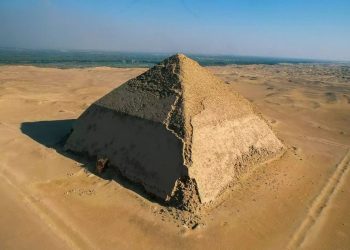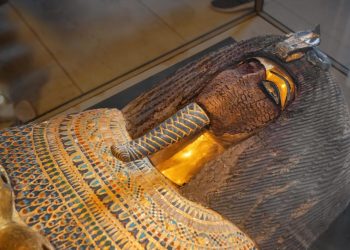There a spacecraft so far away in space it has become the first humanmade object to reach interstellar space. It is traveling out there among the stars, far from Earth, far from home. Voyager 1 is set to never return to our star system, let alone Earth. Its mission; to explore the most distant reaches of space.
(1) September 5, 2020, marked 43 since NASA’s Voyager 1 spacecraft launched from Cape Canaveral. In 2012, the probe became the first object to enter an uncharted, never-before-seen region of space; interstellar space. More precisely, on August 25, 2012, at 122 astronomical units, the probe left the so-called heliopause, and so became the first to reach interstellar space.
(2) Although it has made history and has nothing left to prove, the 722 kg robotic probe is still operational today, continuing its extended mission of locating and studying the limits of the solar system, including the Kuiper belt and beyond, as well as exploring immediate interstellar space, until one day, it runs out of fuel and waves back to Earth, one more time.
As of writing, (3) the spacecraft is located at a distance of 13,981,721,353 mi from Earth, or 150.41261511 AU. It is traveling (4) at a speed of 38,026.77 miles per hour, as it hurls away from our star, looking at alien skies no other manmade object has ever seen. (You can check out their location portrayed on a cosmic map by clicking here).
The spacecraft has excelled itself. (5) Its original mission was to visit Jupiter and Saturn. (6) It was the first probe to provide detailed images of the satellites of those planets as well as their moons in a scientific and astronomical boom that helped us better understand what the solar system’s outer planets were like. Since then, we have come a long way studying the solar system, but data beamed back to Earth by both the Voyager 1 and Voyager 2 spacecraft were imperative in our exploration of the solar system.

Although the spacecraft is traveling at incredibly high velocity, NASA experts say that that (7) the probe is nowhere near of leaving the so-called Oort cloud. (8) It has been estimated that the spacecraft will exit the cloud in about 17,700 years.
The Oort cloud is the most distant region of our solar system. Although still obscure to astronomers, it is believed that the Oort cloud is a kind of massive spherical shell that surrounds the rest of the solar system. It is mostly made of icy pieces of space debris, and likely contains billions if not trillions of such objects ranging in size from a football to a mountain. In fact, if science serves us right, then the Oort cloud is the likely source for most long-period comets.
(9) The Oort cloud is so massive that it will take Voyager one a few hundred years to enter it.
(10) Voyager 1 is currently the farthest human-made object from Earth, traveling at a faster relative speed to Earth and the Sun than any other space probe in existence. (11) Despite its sister Voyager 2 launching 16 days earlier, Voyager 2 will never overtake Voyager 1.
(12) Neither will the New Horizons spacecraft that gave us those incredible, mind-altering images of Pluto, its moons, and the objects within the Kuiper Belt, even though it was launched from Earth at a higher speed than the two Voyager spacecraft.
(13) Voyager 1 has a hyperbolic trajectory and has reached escape velocity, which means that its orbit will (14) never take it back towards the inner parts of our solar system.
Both Voyager spacecraft have exceeded their anticipated lifetimes. Each of the spacecraft obtains their power from three RTGs (radioisotope thermoelectric generators), which are expected to be generating enough energy for the probes to be in communication with the Earth until at least 2025.
Given that the spacecraft are expected to travel to where no other spacecraft has ever been, astronomers on Earth have fitted the Voyager 1 spacecraft with a message from Earth, designed to be read by potential alien civilizations that one day may encounter or intercept its journey through space. (15) Both Voyager 1 and Voyager 2 carry small metal plaques identifying their time and place of origin. More importantly, they carry a phonograph record in the form of a 12-inch gold-plated copper disk, which contains not only sounds and images of Earth but also details about the diversity of life and the cultures on our planet.
References: NASA / Voyager Mission Status











